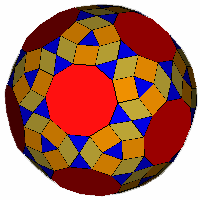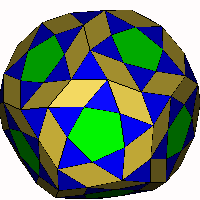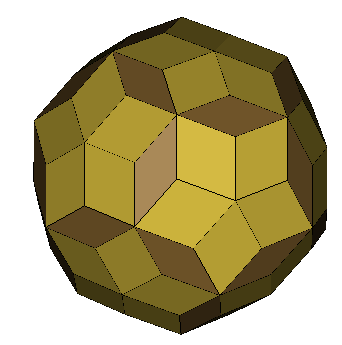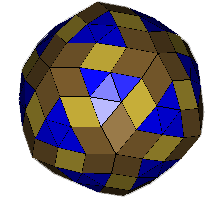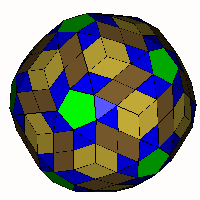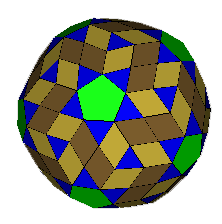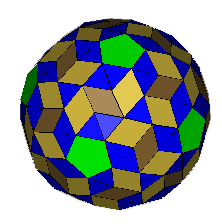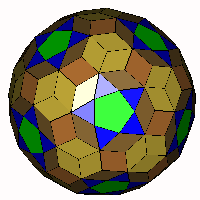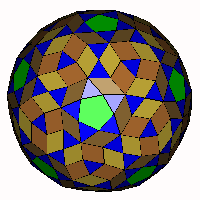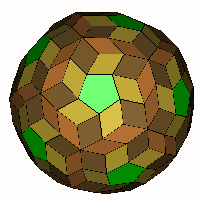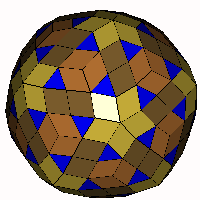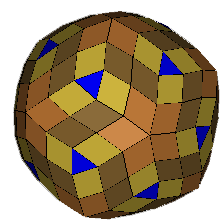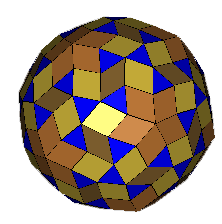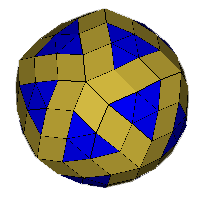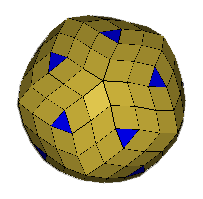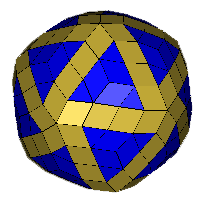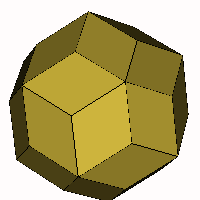
Rhombic Triacontahedron (a=63.435°) LINK
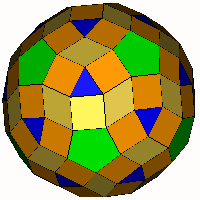
Expanded Rhombic Triacontahedron (a=63.435°) LINK
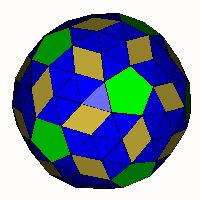
'Snub' Rhombic Triacontahedron (a=62.967°) Take an expanded rhombic triacontahedron, divide each square into two triangles and allow to relax. Note the rhombi are different to those in the original rhombic triacontahedron. OFF
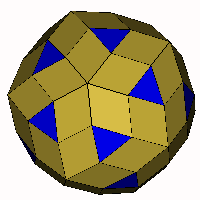
Rhombi-propello-icosahedron (a=66.140°) LINK
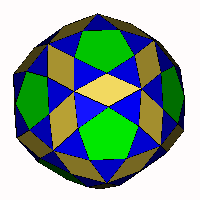
'Faceted' Rhombic Enneacontahedron (a=53.130°) Take a rhombic enneacontahedron and connect the obtuse vertices of the 'thin' rhombi. Then allow to relax. An alternative construction is by edge rhombifying a dodecahedron. OFF
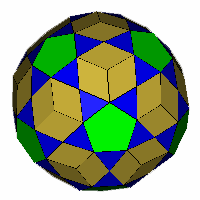
Rhombified Goldberg Fullerene C80 (a=60.961°). Take the dual of a geodesic sphere of frequency 2, replace the distorted hexagons with rhombus/triangle complexes and allow to relax. Discovered by Roger Kaufman. OFF
Rhombified Petrie Expanded Truncated Dodecahedron (a=60.961°). Take the Petrie expanded truncated dodecahedron, replace the distorted hexagons with rhombus/triangle complexes and allow to relax. This can also be regarded as an expanded version of Roger Kaufman's Rhombified Goldberg Fullerene C80. OFF
Rhombified Face Faceted Truncated Dodecahedron (a=48.471°). Take a truncated dodecahedron, replace the decagons with complexes of a pentagon surrounded by five triangles and five rhombi. Relax the model. OFF
